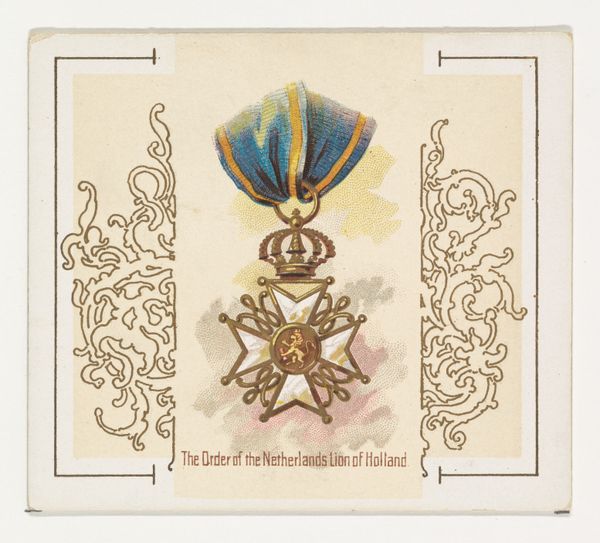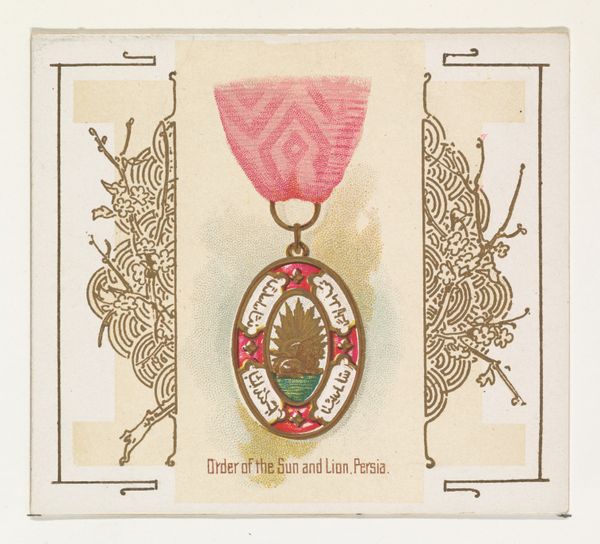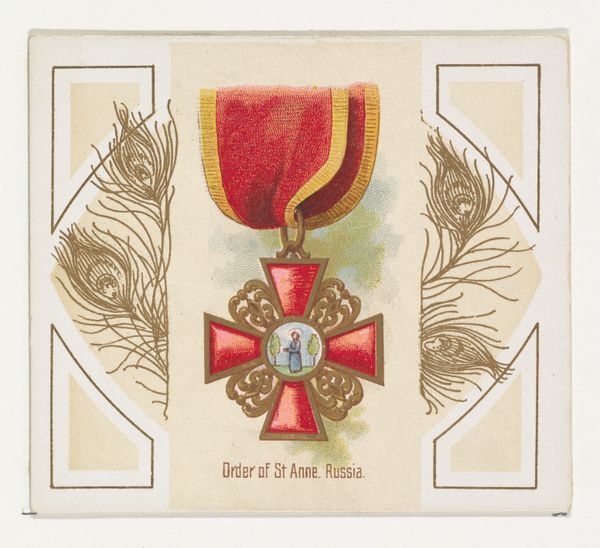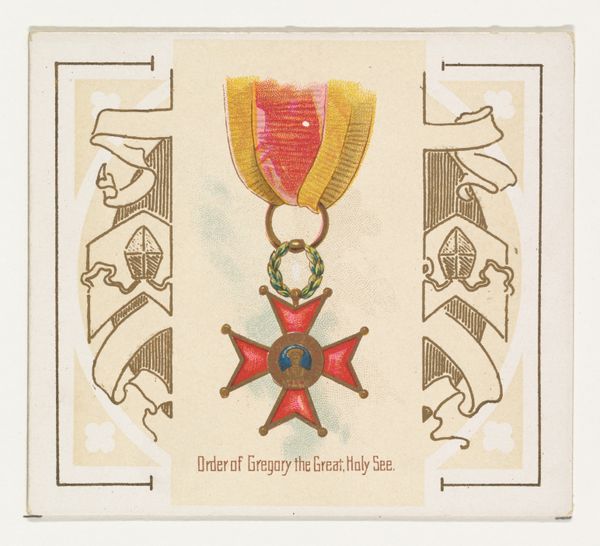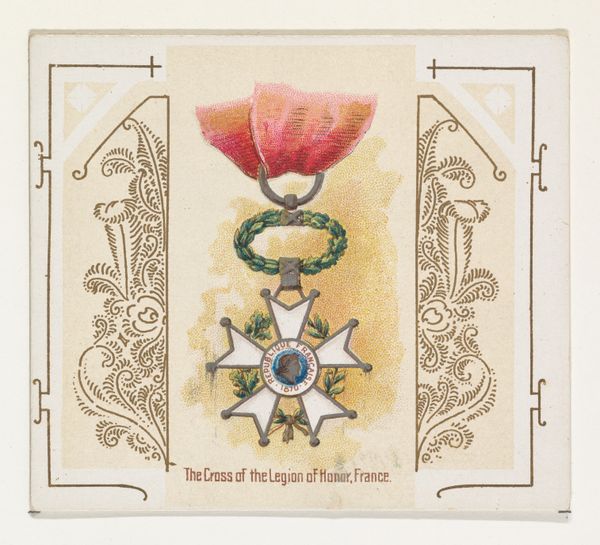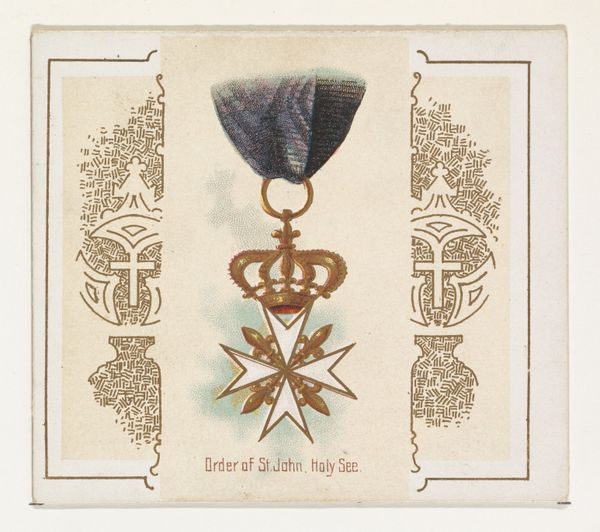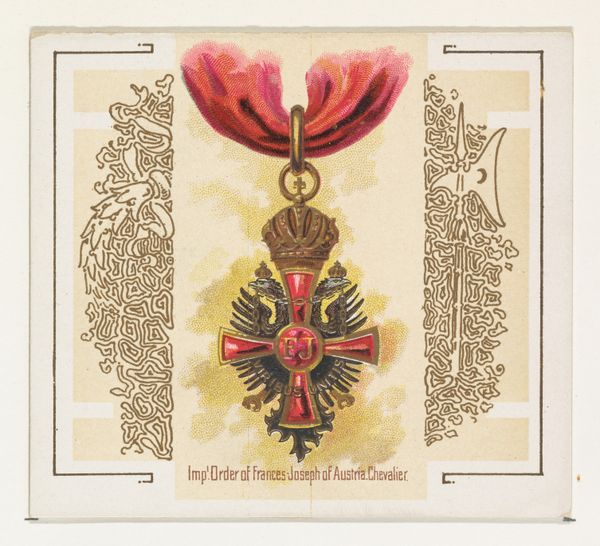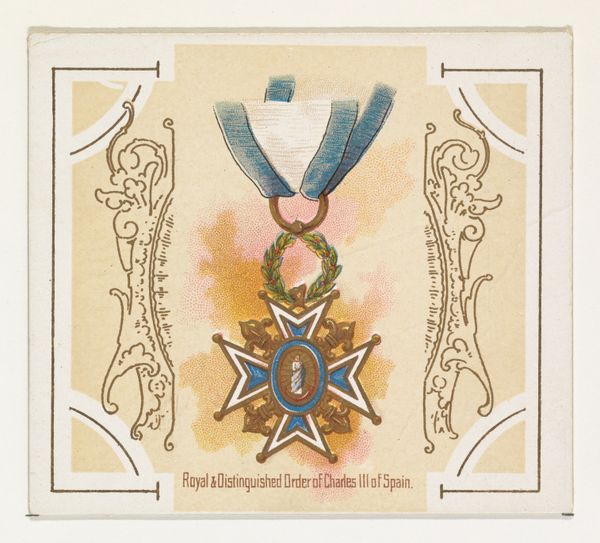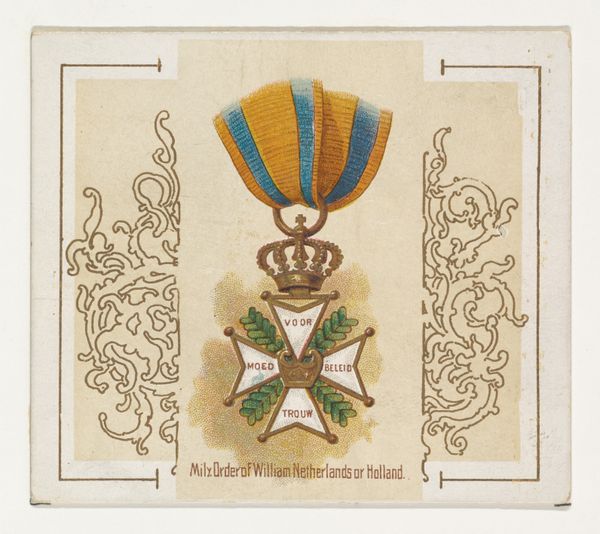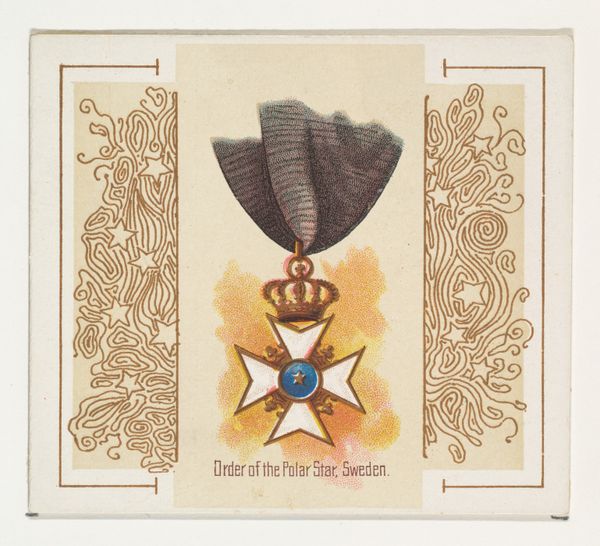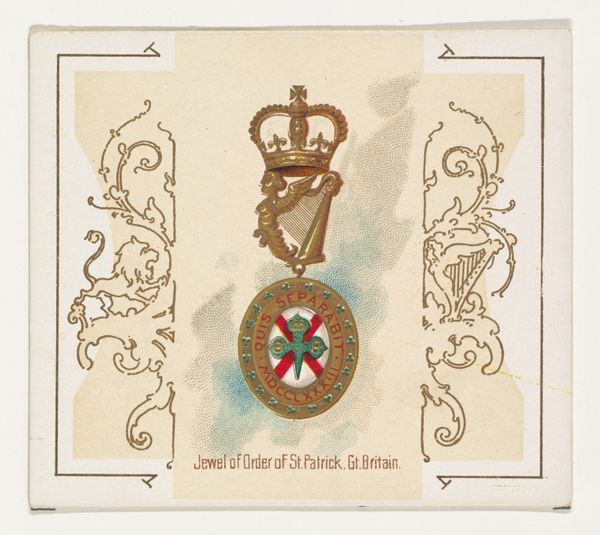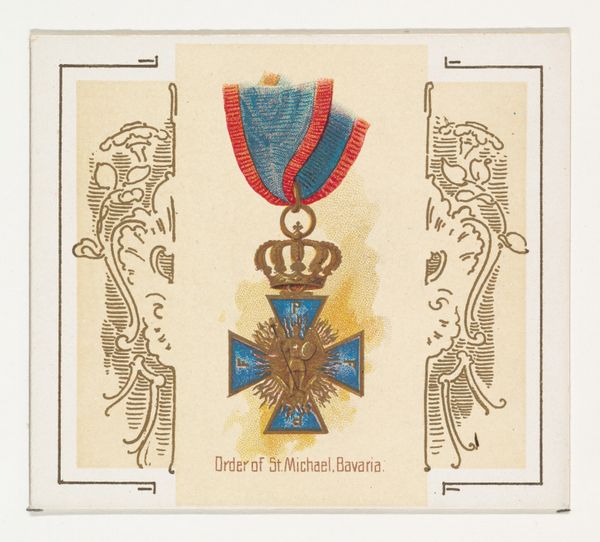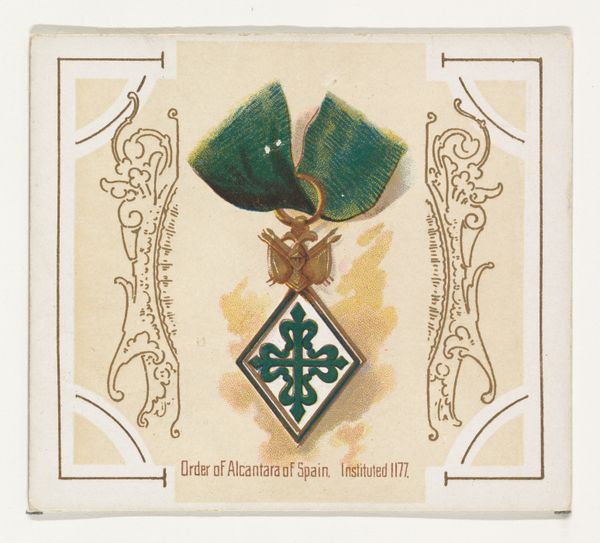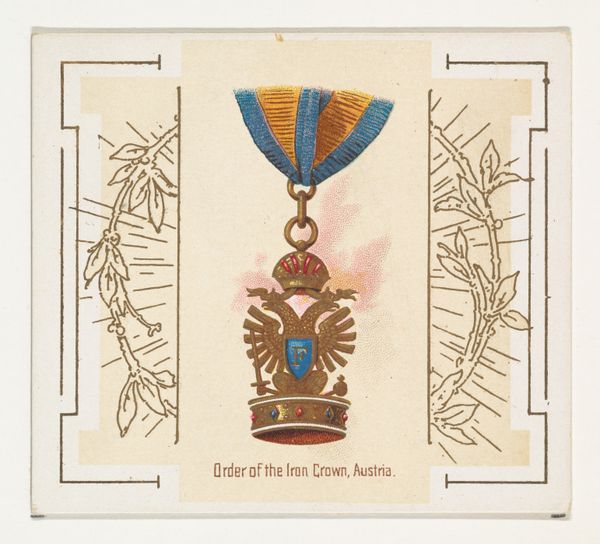
Order of the White Falcon, Saxe Weimar, from the World's Decorations series (N44) for Allen & Ginter Cigarettes 1890
0:00
0:00
drawing, graphic-art, print
#
drawing
#
graphic-art
#
art-nouveau
# print
#
symbolism
#
watercolour illustration
Dimensions: Sheet: 2 7/8 x 3 1/4 in. (7.3 x 8.3 cm)
Copyright: Public Domain
This is a chromolithograph, made by Allen & Ginter for their series of cigarette cards. It shows the Order of the White Falcon, Saxe Weimar. Printed images like this were inexpensive to produce, and that made them ideal for mass distribution. But the story of chromolithography really begins with the stone. Limestone was quarried, and then painstakingly polished perfectly smooth. The image was then drawn on the stone’s surface, using greasy crayons or inks. Next, the entire surface was chemically treated, so that ink would adhere only to the drawn design. The stone was dampened and inked, and paper pressed against it to transfer the image. The key thing is, this process had to be repeated for every single color. It took time and labor to get everything aligned correctly. But the result was an image that, while not exactly high art, brought the idea of mass production to vivid life. It also allowed ordinary people access to images of luxury items that they might never otherwise see. This unassuming card therefore reveals a lot about the history of taste and consumer culture.
Comments
No comments
Be the first to comment and join the conversation on the ultimate creative platform.
